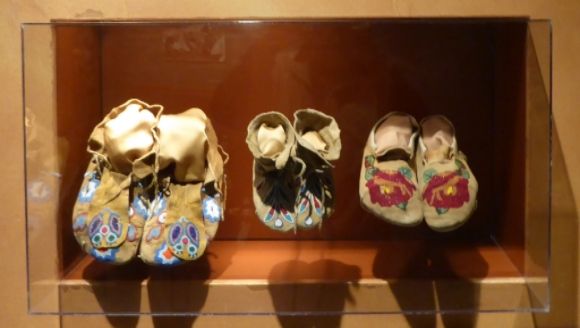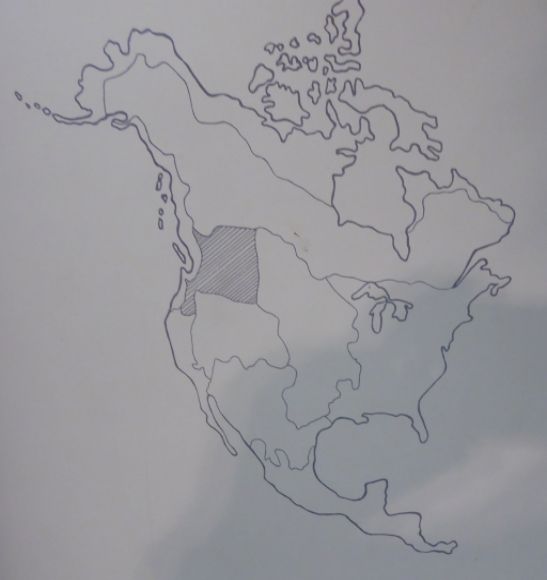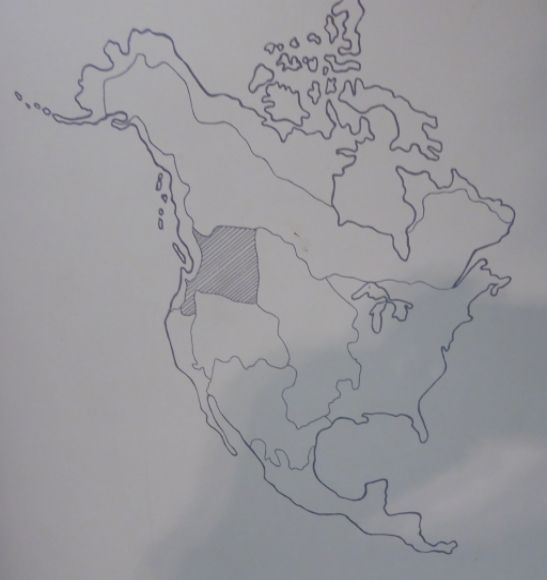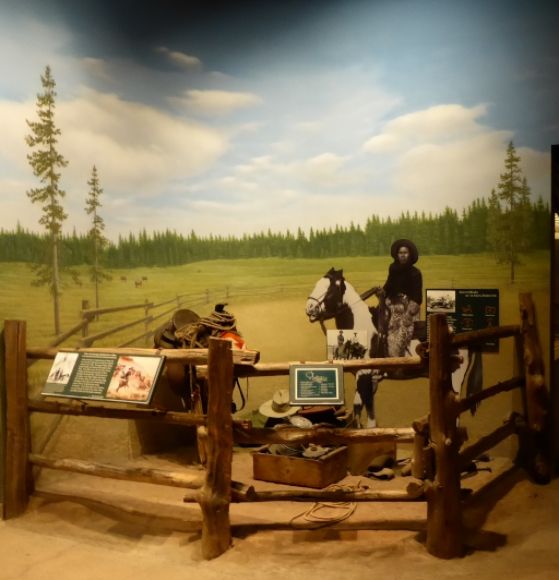The Hall of Plateau Indians (Photo Diary)
The High Desert Museum, located just south of Bend, Oregon, has a large gallery devoted to Plateau Indians.
The Plateau Culture Area is the area between the Cascade Mountains and the Rocky Mountains in Washington, Oregon, Idaho, British Columbia, and Western Montana. From north to south it runs from the Fraser River in the north to the Blue Mountains in the south. Much of the area is classified as semi-arid. Part of it is mountainous with pine forests in the higher elevations.
While much of the Plateau Culture Area constitutes a dry region characterized by a sagebrush-Juniper steppe area with pine forests at the higher levels, there are portions of the area which do not fit this description. In the northern portion of the Plateau Culture Area, there is a temperate rainforest with higher precipitation.
 The map shown above shows the Plateau Culture Area and the major tribes in the area.
The map shown above shows the Plateau Culture Area and the major tribes in the area.
This culture area has historic ties with and similarities to both the Northwest Coast and the Great Plains. Most of the Indian tribes of this area have linguistic and historic ties to the tribes of the Northwest Coast. In many respects, the Plateau cultures represent an inland extension of the coastal cultures. Villages, usually occupied for 7-8 months each year, were established along rivers, most frequently at the conjunction of tributary water ways where fish were abundant. Canoes, prior to the introduction of the horse, were an important means of travel. According to anthropologist Deward Walker, in his introduction to the Plateau Culture area in the Handbook of North American Indians:
“Until the adoption of the horse, Plateau peoples maintained close connections with the Northwest Coast, but afterward also with the Plains.”
In addition, there are cultural, linguistic, and historic ties with the Indian nations of the Great Basin. In his book Conflict and Schism in Nez Perce Acculturation: A Study of Religion and Politics, Deward Walker also writes:
“…many Plateau cultures probably have as much in common with northern Basin cultures as they do with Plains or Northwest Coast cultures.”
 Shown above is a typical Plateau conical mat lodge.
Shown above is a typical Plateau conical mat lodge.
According to the Museum display:
“For generations, Indians of the Columbia River Plateau built tipis like this one using natural materials. The poles are lodgepole pine and the outer mats are fashioned from tules, a reed found in marshy areas. Once gathered, they are woven together with string made from hemp.”
 Shown above is the inside of the lodge.
Shown above is the inside of the lodge. 






 Shown above are a Nez Perce warclub and a Cayuse warclub.
Shown above are a Nez Perce warclub and a Cayuse warclub.
 Shown above is a basket which was used in gathering huckleberries, nuts, and other natural crops.
Shown above is a basket which was used in gathering huckleberries, nuts, and other natural crops.
 Another basket used in gathering huckleberries is shown above.
Another basket used in gathering huckleberries is shown above.
 The diorama shown above shows women gathering root plants.
The diorama shown above shows women gathering root plants.
According to the Museum display:
“In the early spring, women from different generations gather at certain places on the reservation, sing songs of thanks, then harvest edible roots in the manner of their ancestors.”
Root crops, such as camas, provided a major source of carbohydrates for the traditional Plateau diet. Root crops were often dug in May and June, before the plants had fully matured. At this time, the roots were still soft and juicy. Within the Plateau area, Indian people used about 35 species of root crops.
Corn Husk Bags
Corn husk bags are distinctive to the Plateau area and were used for dried roots, berries, nuts and other foods.






